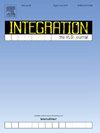Using virtual prototypes and metamorphic testing to verify the hardware/software-stack of embedded graphics libraries
IF 2.2
3区 工程技术
Q3 COMPUTER SCIENCE, HARDWARE & ARCHITECTURE
引用次数: 0
Abstract
Embedded graphics libraries are part of the Firmware (FW) of embedded systems and provide complex functionalities optimized for specific hardware. After unit testing of embedded graphics libraries, integration testing is a significant challenge, in particular since the hardware is needed to obtain the output image as well as the inherent difficulty in defining the reference result. In this paper, we present a novel approach focusing on integration testing of embedded graphic libraries. We leverage Virtual Prototypes (VPs) and integrate them with Metamorphic Testing (MT). Metamorphic Testing (MT) is a software testing technique that uncovers faults or issues in a system by exploring how its outputs change under predefined input transformations, without relying on explicit oracles or predetermined results. In combination with virtualizing the displays in VPs, we even eliminate the need for physical hardware. This allows us to develop a Metamorphic Testing (MT) framework automating the verification process. In our evaluation, we demonstrate the effectiveness of our Metamorphic Testing (MT) framework. On an extended RISC-V Virtual Prototype (VP) for the GD32VF103VBT6 platform, we found 15 distinct bugs for the widely used TFT_eSPI embedded graphics library, confirming the strength our approach. We finish the evaluation of our Metamorphic Testing (MT) approach by discussing the achieved structural coverage for function, line and branch coverage.
求助全文
约1分钟内获得全文
求助全文
来源期刊

Integration-The Vlsi Journal
工程技术-工程:电子与电气
CiteScore
3.80
自引率
5.30%
发文量
107
审稿时长
6 months
期刊介绍:
Integration''s aim is to cover every aspect of the VLSI area, with an emphasis on cross-fertilization between various fields of science, and the design, verification, test and applications of integrated circuits and systems, as well as closely related topics in process and device technologies. Individual issues will feature peer-reviewed tutorials and articles as well as reviews of recent publications. The intended coverage of the journal can be assessed by examining the following (non-exclusive) list of topics:
Specification methods and languages; Analog/Digital Integrated Circuits and Systems; VLSI architectures; Algorithms, methods and tools for modeling, simulation, synthesis and verification of integrated circuits and systems of any complexity; Embedded systems; High-level synthesis for VLSI systems; Logic synthesis and finite automata; Testing, design-for-test and test generation algorithms; Physical design; Formal verification; Algorithms implemented in VLSI systems; Systems engineering; Heterogeneous systems.
 求助内容:
求助内容: 应助结果提醒方式:
应助结果提醒方式:


